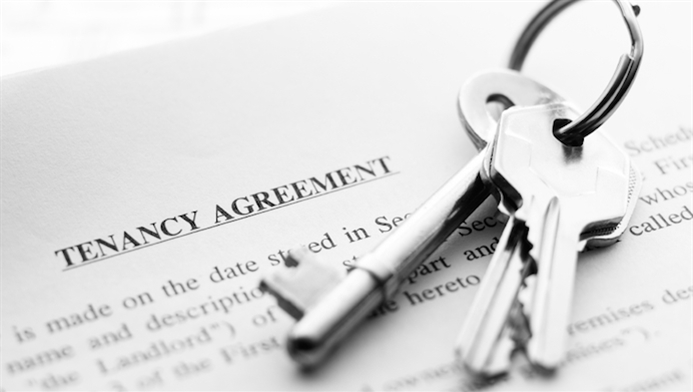Fixed term or periodic tenancy?
by Pam Marshall
So, you’ve got your investment property sorted. You think you’ve found a promising tenant. It’s time to sign the paperwork. But before you do, there’s one lingering question – do I go fixed term or periodic tenancy? Which is the simplest option for me as a landlord?
There are benefits to both, but it really depends on where you’re at in your property investment journey. We’ll take you through the ins and outs.
Periodic Tenancies
A periodic tenancy is one that lasts until the tenant wants to leave or the landlord asks them to leave. Both parties have to give notice to conclude the tenancy – tenants, 21 days’ written notice; landlords 90 days’ written notice (42 days in some exceptions*).
The pros:
- It gives you flexibility to end the tenancy relatively easily if the tenant isn’t up to scratch.
- It also gives you more flexibility if your circumstances could change eg. you want to sell or move in yourself.
The cons:
- The tenant could leave at any point only legally having to give 21 days’ notice.
- Even if you’ve given the tenant 90 days’ notice, they can leave at any point as long as they’ve given you 21 days’ notice, which could mean potential lost earnings.
- Periodic tenancies often have a higher turnover of tenants – this means more wear and tear on the property and ultimately more repairs and maintenance, which leaves you spending more money.
- Often the option to increase the rent is missed as there is no time structure to the tenancy, unless you or your property manager are very good at following up periodic agreements.
- Your tenant may leave at a ‘slow’ time in the market, which means your property could be vacant longer.
Fixed Term Tenancies
A fixed term tenancy lasts for a set amount of time, for example, six months. Neither tenant nor landlord should give notice any earlier than the fixed term – though you can get out of a fixed term tenancy if circumstances change, but it can be very complicated.
At the end of a fixed term tenancy it automatically switches over to become a periodic tenancy, though you can arrange to extend for another term with your tenant. This notice needs to be given no sooner than 90 days before the end of the tenancy and no later than 21 days before the end of the tenancy.
The pros:
- A fixed term agreement gives you security and peace of mind in knowing that the rent will be coming in for the period of the agreement.
- It can also mean you get better tenants – tenants that are willing to sign a fixed term contract want a good, stable rental property that they can settle into. They’re also more likely to look after the property, treating it as their own.
- Fixed term tenancies typically result in less vacancy than periodic tenancies – this means a lower turnover of tenants, which reduces wear and tear on the property.
- It helps you plan and budget for any expenses or refurbishment that may be needed.
- As the tenancy is reviewed at the end of a fixed period, it gives you a logical time to schedule rent increases – these can even be written into the tenancy agreement.
- You have reasonable control over when the tenancy can end, for example you could renew a fixed term agreement to give you another six months or a year of steady rental income while you wait for the market to return from a lull.
The cons:
Circumstances can change very quickly and a fixed term agreement does lock you in to a contract – you can break the agreement if need be, but only under these provisions:
- Both the landlord and tenant agree.
- The landlord allows the tenant to assign or sublet the premises.
- The Tenancy Tribunal allows it, due to a change in circumstances that would cause the tenant or the landlord severe hardship if the tenancy were to continue.
If your tenant wants to end the fixed term agreement early, they must find you a new tenant by assigning or subletting the property – you can have a say in who the next tenant will be, though. Also, just to note, if assigning or subletting is not prohibited in the tenancy agreement, you cannot unreasonably refuse to allow the tenant to assign the tenancy.
Our Take
If you know that your plans are relatively steady and that your strategy for your investment property is long-term, then fixed term is a good option. The fewer changes of tenant, the easier things are for you – and that’s the general idea behind fixed term tenancies, stability for you and your tenant. At the end of the day it comes down to occupancy rate and having a tenant in to cover your costs as much as possible. We would suggest that fixed term agreements tend to cover you better.
If your plans for the future are a little hard to predict, the flexibility of a periodic tenancy may be a better fit. You can still get a great tenant on a periodic tenancy, and keep them for a long time. That comes down to doing the right background checks or going through an agency’s tenant finding service.
We believe investing in property is a great option and we love to see landlords succeeding, which is why we’re absolutely happy to give you free advice on tenancy any time – just get in touch.
* You can give 42 days’ notice if:
- the property has been sold and the new buyers don’t want tenants.
- the owner or a member of the owner’s family is going to live in the property.
- the property is normally used as employee accommodation and is needed again for that purpose, and the fact that this might happen was stated in the Tenancy Agreement.



